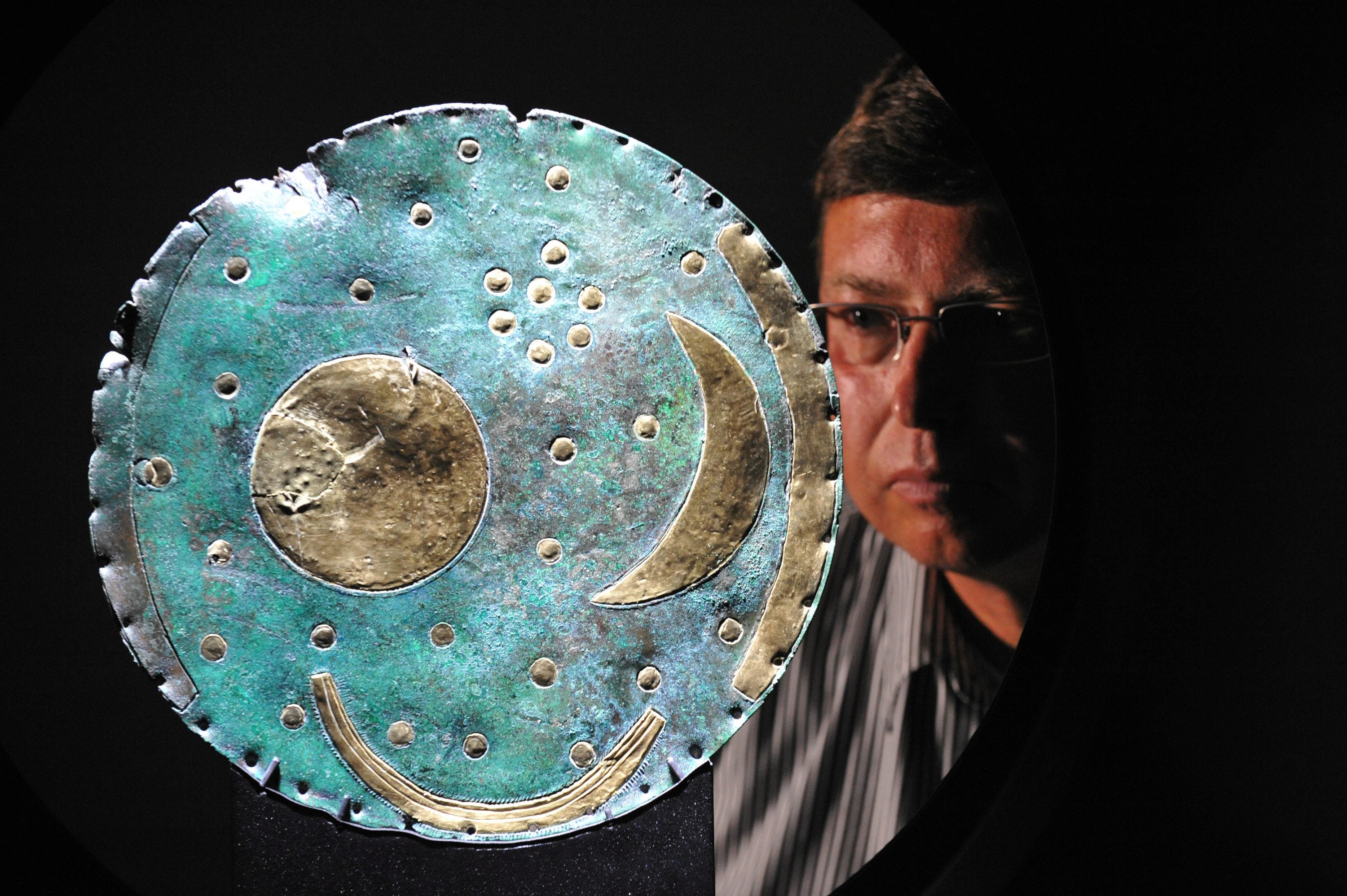British Museum to display world’s ‘oldest map of stars’
The 3,600 year old Nebra Sky Disc will be on display from February next year

Your support helps us to tell the story
From reproductive rights to climate change to Big Tech, The Independent is on the ground when the story is developing. Whether it's investigating the financials of Elon Musk's pro-Trump PAC or producing our latest documentary, 'The A Word', which shines a light on the American women fighting for reproductive rights, we know how important it is to parse out the facts from the messaging.
At such a critical moment in US history, we need reporters on the ground. Your donation allows us to keep sending journalists to speak to both sides of the story.
The Independent is trusted by Americans across the entire political spectrum. And unlike many other quality news outlets, we choose not to lock Americans out of our reporting and analysis with paywalls. We believe quality journalism should be available to everyone, paid for by those who can afford it.
Your support makes all the difference.An ancient item that is thought to be the world’s oldest surviving map of the stars is to go on display at the British Museum.
The 3,600-year-old Nebra Sky Disc was discovered in Nebra, Germany, in 1999 and is being loaned to the London museum from next year.
The 30cm bronze disc has a blue-green patina and is adorned with gold symbols thought to represent the sun, moon, stars, solstices and Pleiades constellation.
The Nebra disc belongs to Germany’s State Museum of Prehistory in Halle and this is the first time it has been loaned internationally for 15 years.
It was recovered in a police sting after being found by illegal treasure hunters using metal detectors in 1999.
It will be displayed as a part of a Stonehenge exhibition from February.
Neil Wilkin, curator of The World Of Stonehenge at the British Museum, said: "The Nebra Sky Disc and the sun pendant are two of the most remarkable surviving objects from Bronze Age Europe.
"Both have only recently been unearthed, literally, after remaining hidden in the ground for over three millennia.
"We’re delighted that they will both be key pieces in our once-in-a-lifetime Stonehenge exhibition at the British Museum.
"While both were found hundreds of miles from Stonehenge, we’ll be using them to shine a light on the vast interconnected world that existed around the ancient monument, spanning Britain, Ireland and mainland Europe.”
The Nebra Sky Disc will be displayed in The World of Stonehenge exhibition from February 17 to July 17 next year.
Join our commenting forum
Join thought-provoking conversations, follow other Independent readers and see their replies
0Comments